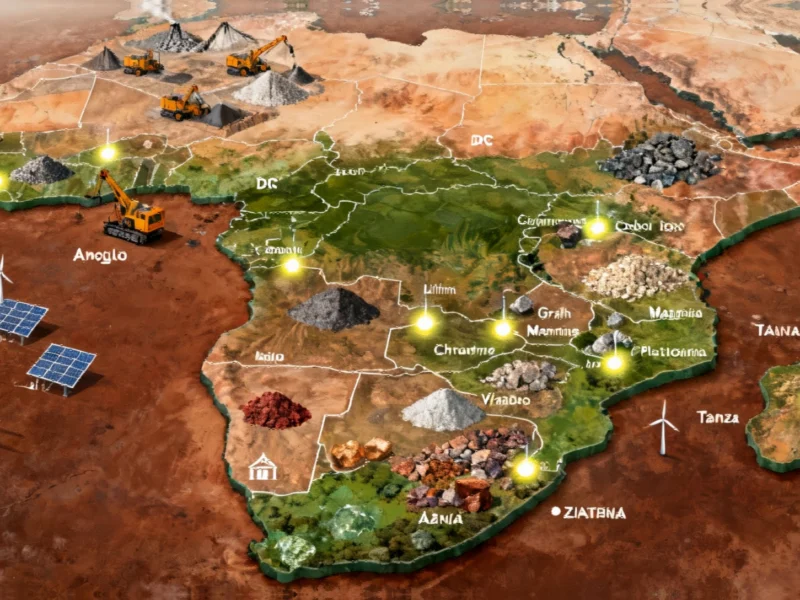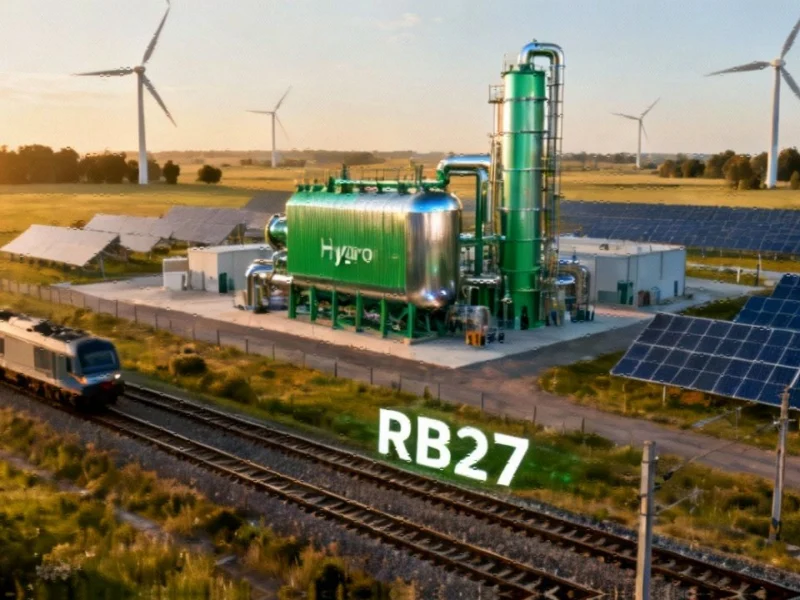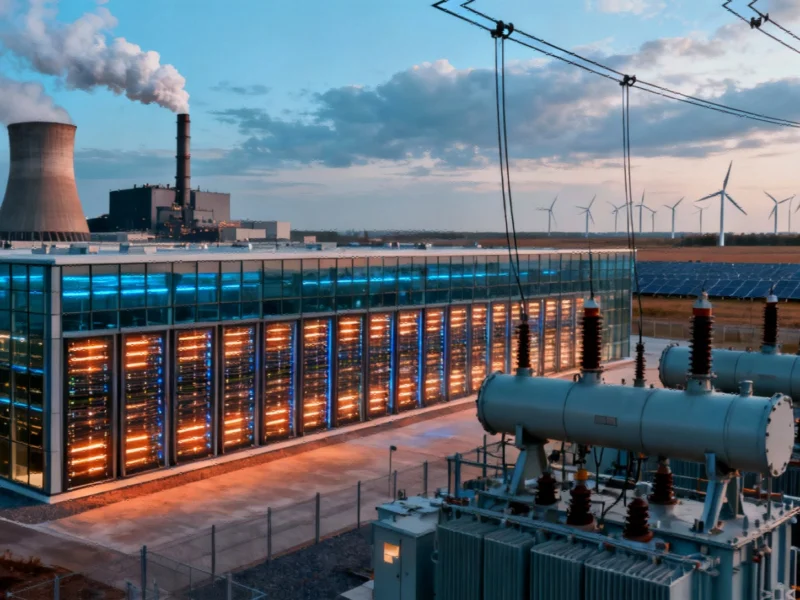Unlocking Southern Africa’s Mineral Wealth Through Innovative Funding Models
As global demand for clean energy technologies accelerates, Southern Africa stands at a pivotal juncture with its substantial reserves of critical minerals. According to recent analysis, the region holds approximately 30% of the world’s critical mineral resources, positioning it as a crucial player in the global energy transition. However, realizing this potential requires overcoming significant financing challenges that have historically constrained development. The region’s mineral wealth represents not just economic opportunity but a chance to redefine its role in global value chains, as highlighted in this comprehensive assessment of Southern Africa’s critical minerals landscape.
The financing gap remains substantial, with Africa’s exploration spending reaching only $1.3-billion in 2024—merely 10.4% of global investment—and Southern Africa’s share being even smaller. This disparity exists despite the region’s higher reserves-to-production ratios for most minerals except lithium, indicating significant untapped potential. The challenge extends beyond mere extraction to creating sustainable value chains that benefit local economies and communities.
Identifying and Overcoming Financing Barriers
Recent research identifies eight core financing barriers affecting Southern Africa’s critical minerals sector: policy uncertainty, investment risks, energy access constraints, transportation limitations, lagging innovation, slow industrialization pace, skill gaps, and demand volatility. These interconnected challenges require coordinated solutions that address both immediate needs and long-term development goals.
Mzila Mthenjane, CEO of Minerals Council South Africa, emphasizes that “We need to be deliberate in our policy, and we need to be intentional in our actions… as host to capital in South Africa; I think that’s how we’ll be able to increase the investment that we need.” This sentiment reflects the growing recognition that strategic policy frameworks must accompany financial interventions.
Innovative Financing Mechanisms and Derisking Strategies
The path forward involves implementing innovative financing tools including derisking structures, guarantees, and blended finance approaches. These mechanisms can help attract the substantial capital required while ensuring projects remain viable and sustainable. As noted by African Union Development Agency CEO Nardos Bekele-Thomas, “We must derisk ourselves to attract the right kind of capital.”
Julie Courtnage, Executive Director of Mandela Mining Precinct, argues that derisking investment requires forward-looking research and better risk management. “Return on investment is not only about your capital invested and the interest and the returns; it’s whether what you’re investing in is going to create more liabilities than returns. So, put that longer-term lens on and have a more systemic view of your investments as you are pursuing critical minerals.”
Technology and Infrastructure Development
Critical to unlocking mineral potential is investing in appropriate technology and infrastructure. Courtnage emphasizes the importance of “Africa-relevant” technologies, noting that “we cannot necessarily simply import a technology. It has to be relevant to the sector under the conditions.” This approach mirrors trends in other sectors where advanced automation and computing solutions are transforming traditional industries through customized applications.
Infrastructure development plays an equally crucial role, as demonstrated by initiatives like the Lobito Corridor—a railway project connecting mineral-rich regions of the DRC and Zambia to Angola’s Port of Lobito. Supported by multiple international partners, this project exemplifies how strategic infrastructure investments can facilitate regional trade and investment while addressing transportation barriers.
Integrated Value Chain Financing Approach
Bekele-Thomas advocates for integrated value chain financing that builds sovereign and resilient economies. “If you want to finance a mine, your proposal must include financing for the local processing plant, [and] the business case for a solar plant should be linked to powering a local industry, not just feeding the grid.” This holistic approach ensures that capital inflows create lasting wealth beyond mere extraction.
The true value of critical minerals, she notes, lies in “the transport corridors, the power grids, the supply chains, the water systems, the [small-, medium-sized and microenterprises] and the knowledge economies they unlock.” This perspective aligns with global trends where strategic infrastructure investments are creating new economic ecosystems beyond their immediate applications.
Policy Reforms and Regional Collaboration
Zambia’s mining policy reforms demonstrate how regulatory certainty can boost investor confidence and promote local participation. With copper production expected to reach one-million tonnes by 2026 and three-million tonnes by 2031, these reforms show the potential impact of coordinated policy action.
Jörgen Sandström, head of the WEF’s Transforming Industrial Ecosystem programme, emphasizes that “Cross-border collaboration is really essential in this space.” This collaboration extends to public-private partnerships, stakeholder engagement, and community participation—all essential components for sustainable mineral development.
Building Sustainable Mineral Economies
DBSA CEO Boitumelo Mosako warns that without strategic action, Africa risks repeating historical patterns where mineral extraction fails to deliver structural socioeconomic transformation. “Our mission has always extended beyond infrastructure financing – it is about enabling inclusive growth, alleviating poverty and deepening development impact across the continent,” she notes.
The approach requires sophisticated financial strategies similar to those seen in advanced quantitative investment methodologies, adapted to the unique challenges and opportunities of mineral development. By combining innovative financing, appropriate technology, strategic policy, and regional collaboration, Southern Africa can transform its critical mineral reserves into engines of sustainable development.
As the global energy transition accelerates, the window of opportunity for Southern Africa to leverage its mineral wealth is both pressing and promising. The region’s success will depend not only on attracting investment but on structuring that investment to create lasting value for its people and economies while contributing to global sustainability goals.
Based on reporting by {‘uri’: ‘engineeringnews.co.za’, ‘dataType’: ‘news’, ‘title’: ‘Engineering News’, ‘description’: ‘Engineering News Online provides real time news reportage through originated written, video and audio material. Each week, an average of 240899-page impressions are generated by over 64 719 online readers. ‘, ‘location’: {‘type’: ‘place’, ‘geoNamesId’: ‘993800’, ‘label’: {‘eng’: ‘Johannesburg’}, ‘population’: 2026469, ‘lat’: -26.20227, ‘long’: 28.04363, ‘country’: {‘type’: ‘country’, ‘geoNamesId’: ‘953987’, ‘label’: {‘eng’: ‘South Africa’}, ‘population’: 49000000, ‘lat’: -29, ‘long’: 24, ‘area’: 1219912, ‘continent’: ‘Africa’}}, ‘locationValidated’: False, ‘ranking’: {‘importanceRank’: 383187, ‘alexaGlobalRank’: 103084, ‘alexaCountryRank’: 1386}}. This article aggregates information from publicly available sources. All trademarks and copyrights belong to their respective owners.



